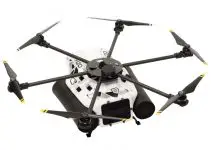You probably know at least a couple of ways to turn your time-lapse sequence of images into a video clip. Sure, you can do so in Final Cut Pro X, Premiere Pro CC, After Effects, Motion, and even in Quicktime. But, what about Apple Compressor?
In another helpful video tutorial, Steve Martin and Mark Spencer from Ripple Training show how to import a time-lapse image sequence into Compressor, then apply a Custom preset, then output the video file using a custom destination. The following workflow is possible due to a new feature in Compressor that now provides 4K support for Apple devices in the form of a new 4K preset.
To start off, open the latest version of Compressor, head on to File in the top menu and choose Add Image Sequence. Then select the folder that contains your image sequence. You don’t need to choose either the first or the last image of the sequence as it’s typically required by other applications. Besides JPEGs, you can also import your camera Raw files directly as Compressor already support these as well.
By clicking on the Add button, the application will instantly create the so-called Job that behaves like a movie clip which means that you can skim over the video, just like you would do with any other video clip. The next step of the process requires applying a preset to the newly created Job.
Optionally, you can add a Custom Location under the Locations tab on the right side of your screen. You can also specify the name of your movie file by utilising any combination of text and tokens in the Location Inspector on the right.
When you swap the Default Location to the Custom one you should instantly see the variations in the Filename taking place as well. Alternatively, you can use the Cropping and Padding section of the Video Inspector to modify the output resolution of the source files, which is a quite common practice when converting a sequence of stills to a video.
You can also add more custom destinations to batch export simultaneously as many image sequences as you want. It’s pointless to say that the latter feature can save you heaps of time, not to mention the fact that most of the other applications that can process your time-lapse images simply lack that feature.
So, there you have it! Now you know how to utilise Apple Compressor to batch process your image sequences right off the bat.
[source: Ripple Training]
Disclaimer: As an Amazon Associate partner and participant in B&H and Adorama Affiliate programmes, we earn a small comission from each purchase made through the affiliate links listed above at no additional cost to you.
Claim your copy of DAVINCI RESOLVE - SIMPLIFIED COURSE with 50% off! Get Instant Access!





